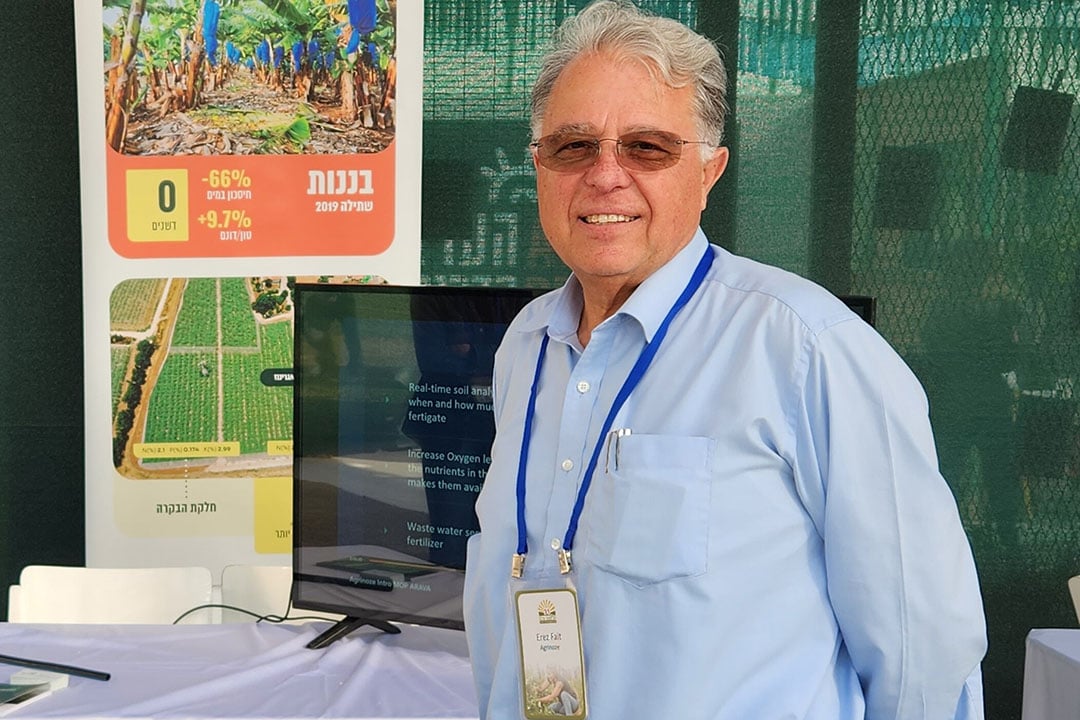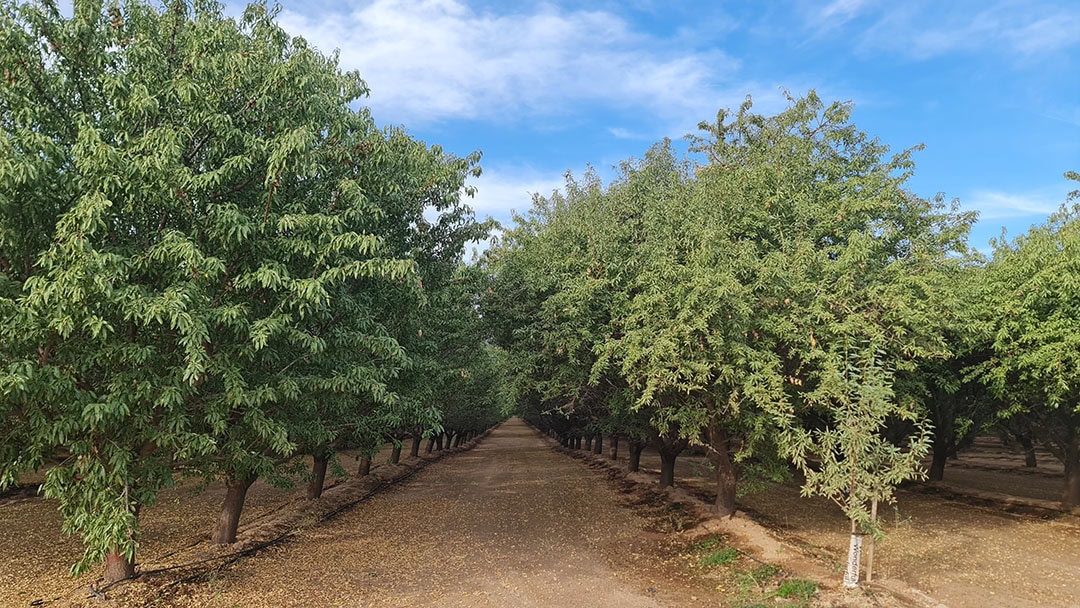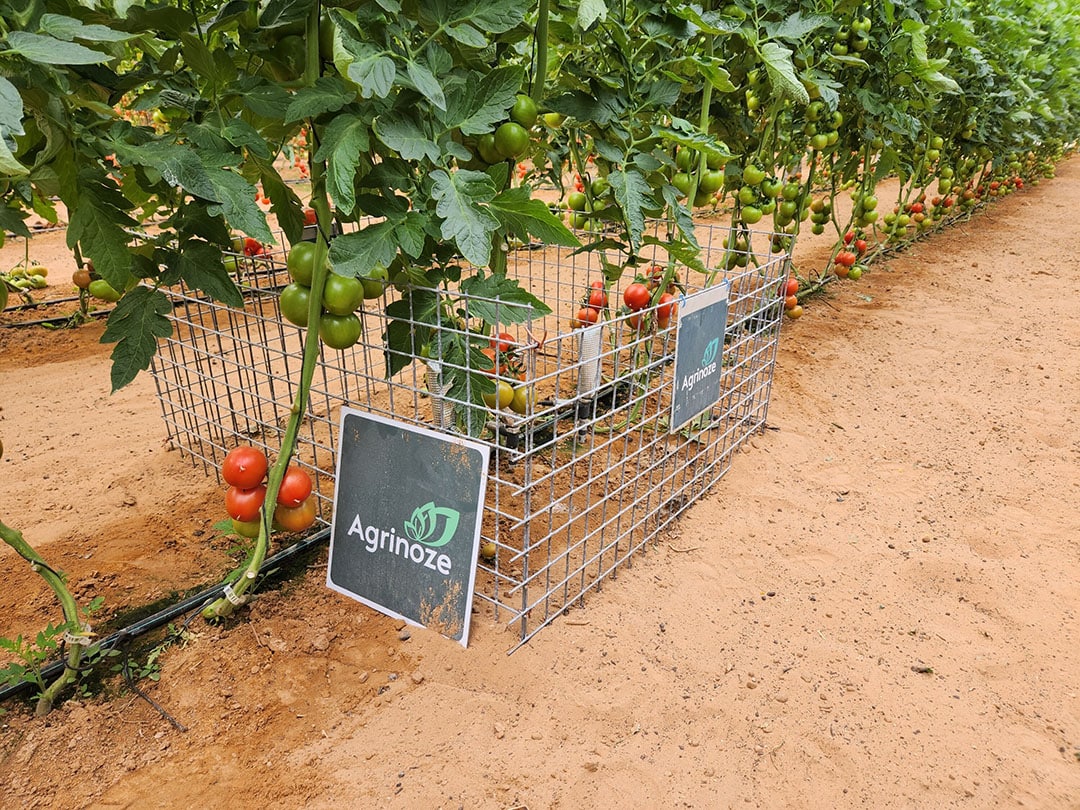‘A plant itself knows better when it needs water’

Israeli company Agrinoze uses the crop itself as an indicator of how much water a plant needs. Its technology stops the overuse of water and fertilisers through precision irrigation, and helps to increase yields.
Co-Founder and CEO Erez Fait says Agrinoze is taking the irrigation decisions from the farmer or agronomist, and gives it to the plants. “Because a plant itself knows better when it needs water.”
Agrinoze says its algorithm autonomously and automatically provides optimal root zone conditions based on real-time crop demand. The company uses soil and root sensors, an irrigation controller and non-drain drip irrigation pipes for its technology. “We use a sensor in the roots, connected to a controller in the field”, Mr Fait points out. ”And the roots are telling the system when it needs water or fertiliser.”
According to Agrinoze, the conventional irrigation methods often don’t include knowledge of the plant’s actual needs, have no real-time response, use complex, crop specific formulas and manual calculations. Mr Fait says they use manual execution, and do not factor in soil characteristics or address extreme conditions.
“The common way today, is to measure the evaporation and transpiration, and the water that is received from driplines, sprinklers and so on”, Mr Fait says. “The amount of water that needs to be applied, comes from this calculation. But we found out through research that this is not the best model.”
Text continues below picture

The most important element for any plant
“The existing model actually just measures the amount of water that has left the soil, and brings it back. Farmers and agronomists think ‘if I return the loss of water, it will be okay’. But we have discovered some new things about the roots of plants for instance. We don’t share that knowledge, but in general, I can say that we have found out that the most important element for any plant is oxygen, before nitrogen. And we know how to increase the level of oxygen, by means of irrigating in a certain way, with a system based on nature.”
“We also know that any roots can absorb water only for a few minutes. After that nothing goes in, and the water just disappears. You create anaerobic conditions, and the roots are blocked. So, we focus on creating the right conditions, and the right part of the roots, that are important for receiving nutrients and keeping plants in a good condition 24/7. We know what the right conditions are around the roots, and have developed a system that manages this automatically and autonomously.”
People often don’t know how to use driplines. They try to return the loss of transpiration and evaporation through drip irrigation
Agrinoze measures the soil’s drain factor, runs soil optimisation algorithms, and manages a unified soil solution. Using a drip system, water drops are spread horizontally in the root area. This enables an even distribution of water between driplines.
Mr Fait says the technology not only increases oxygen levels, but also results in minimal water lost to drainage. It makes sure minimal fertilisers reach groundwater, and there is a strong reduction in greenhouse gas emissions. Currently, Agrinoze uses its own software in combination with off-the-shelf hardware. “But we are developing our own hardware”, Mr Fait explains.
Text continues below picture

How to use driplines
Agrinoze uses low-emission drip irrigation. “That enables the system to produce small drops”, Mr Fait says. “And increases the level of oxygen. People often don’t know how to use driplines. They try to return the loss of transpiration and evaporation through drip irrigation. When they use too much water, they don’t have drops, but streams. That means there is no oxygen, it’s anaerobic, and the plant cannot get the nutrients. You just wash the soil, and the nutrients disappear.”
“Growers then have to add add fertiliser, and increase the salinity of the soil. And when there is water coming up, when the surface is dry, the salinity reaches the roots. Farmers see nothing, but it affects the crop. And its creates a vicious circle.”
Agrinoze claims to have achieved significant yield increases, with a 264% increase in cassava, a 311% increase in melons, and a 383% increase in corn for example. The company says there are also proven results in water savings, with an 80% water conservation in rice, a 60% water conservation in bananas, and a 61% water conservation in dates.
Text continues below picture
How much to fertigate
The Agrinoze system uses real-time soil analysis to dictate when and how much to fertigate. It also allows existing nutrients to dissolve in the soil, and makes them available to plants. In some cases, organic plant waste serves as a natural fertiliser.
The company says it achieved a 100% fertiliser conservation in Californian almonds, grapes and melons. Research show that during the month of June 2022, Agrinoze has managed to decrease the overall water consumption of a California almond orchard by 26% compared to a University of California model.
Text continues below picture

Service per hectare
More than 2,000 gallons (7,571 litres) per acre were saved daily. Meanwhile, leaf nutrient content stayed within the ideal range despite zero fertiliser application. “I spoke to the almond growers recently, and it is going very well”, Mr Fait says.
“We are now doing hemp in Thailand. Where we are seeding directly in buckets with sand from the sea, so we don’t need a nursery. We go from seed to the plant, and give the plants water with a very small amount of fertiliser.”
Agrinoze offers growers its technology as a service per hectare. “We always start with a one-hectare pilot, and we need to create good results”, Mr Fait says. “Because we collect our profit from the results.”
Join 17,000+ subscribers
Subscribe to our newsletter to stay updated about all the need-to-know content in the agricultural sector, two times a week.



